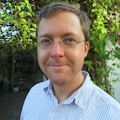Seth John, Ph.D.
Assistant Professor, Earth Sciences, Department of Earth Sciences, University of Southern CaliforniaSeth John’s website
SCOPE-ALOHA Project: Biological Cycling of Trace-Metals and Their Isotopes in the North Pacific
Trace metals dissolved in seawater, such as iron, zinc and cadmium, are crucial for life in the ocean. Marine organisms require metals for a wide variety of life processes, from photosynthesis and carbon assimilation to nutrient acquisition. While the importance of metals has long been known, their low concentration in seawater (parts-per-trillion levels) make analysis challenging, leading to a paucity of data on metals compared with other nutrients.
In conjunction with the SCOPE project, we will explore how trace metals influence biological cycles in the North Pacific Subtropical Gyre, and how the can be used as tracers of biological processes on local and global scales. For example, iron isotopes will be used to trace sources of iron; cadmium concentrations and isotopes will be used to quantify nutrient uptake, mixing and nitrogen fixation; and zinc and zinc isotopes will be used to quantify biological production and export. Both culture work and in situ experiments are used to study the role of metal micronutrients such as Fe on community structure and metabolism.
SCOPE-Gradients Project: Measuring Sources of Iron to the North Pacific Transition Zone
The North Pacific transition zone lies between iron-replete waters of the subtropical gyre and iron-limited waters of the subarctic. Within this transition zone, the biological importance of major nutrients such as nitrogen and phosphorus, and micronutrients such as iron remains enigmatic. For the Gradients project we are deploying a wide array of analytical tools to study how iron is delivered to the transition zone, and how it supports biological productivity once delivered. We have designed a high-resolution sampling robot that allows us to sample surface waters for iron and other metal concentrations at extraordinarily high spatial resolution. This data is paired with depth profiles to quantify the relative fluxes of iron from circulation and atmospheric deposition. Measurements of nutrient-like trace metals such as cadmium, zinc, nickel and copper help us to trace the upwelling of nutrient-rich waters from the deep ocean and the subsequent drawdown by biological productivity, while metals such as iron and lead trace atmospheric dust deposition. Measurements of lead and iron isotopes provide information about the provenance of atmospheric aerosols. Incubations with additions of iron and other nutrients provide information about iron limitation in situ.
Bio:
Seth John is an Assistant Professor at the University of Southern California. Previously he was an Assistant Professor at the University of South Carolina. He received a BA in chemistry from Carleton College, followed by graduate studies in the MIT/WHOI Joint Program and a postdoc at Caltech. John studies the biogeochemical cycling of trace metals and their stable isotope ratios in the oceans. His research has included the first high-spatial resolution sections of trace metal isotopes in the ocean, as well as laboratory experiments and numerical modeling to interpret this natural data.